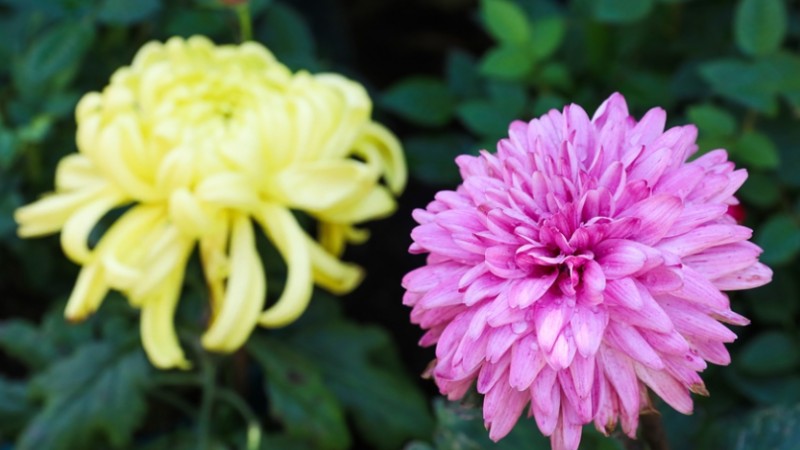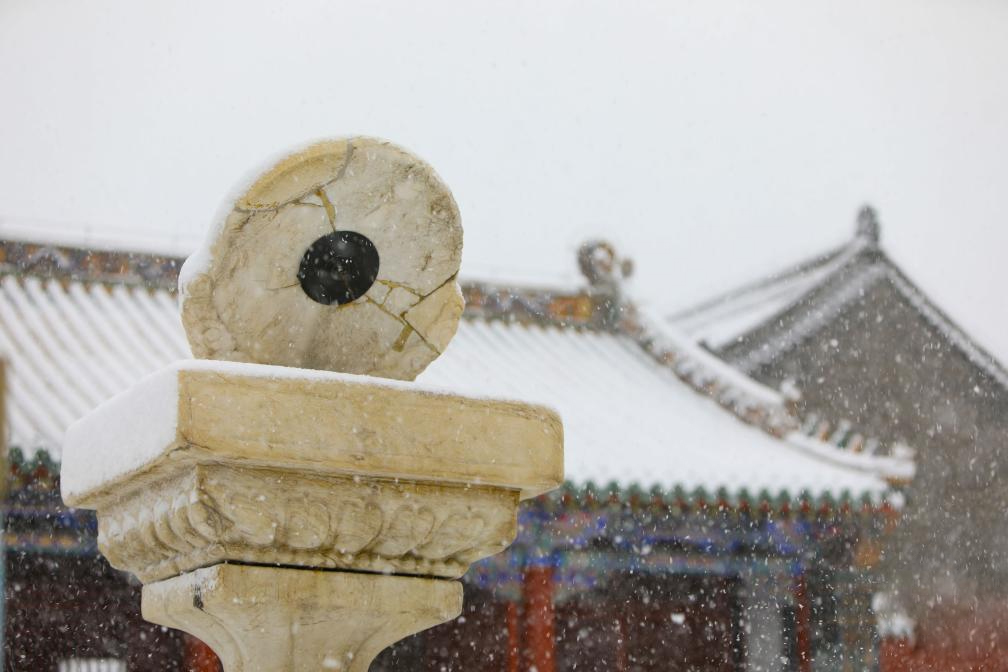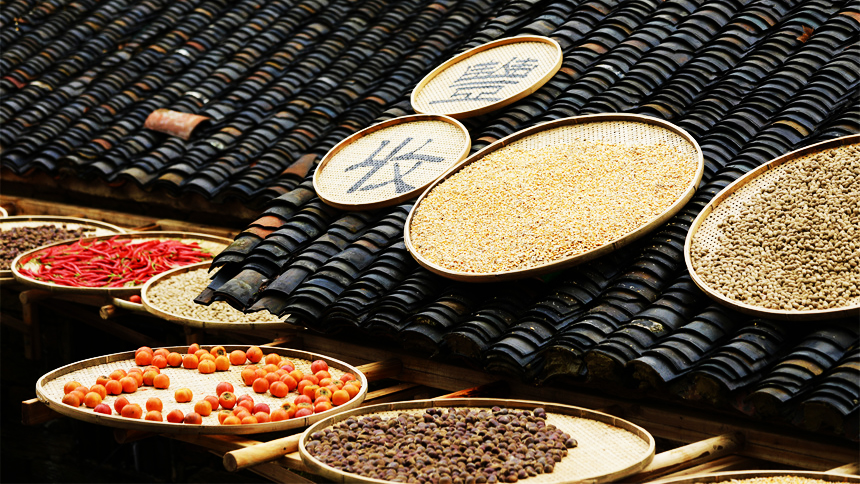Feature: Century-long relay to fulfill late collector's dream for a Chinese musuem
LJUBLJANA, Nov. 8 (Xinhua) -- A late Slovenian private collector's dream that the country should have a museum of Chinese ethnography is finally about to come true thanks to the joint efforts of experts from both countries.
"This year, finally, we could realize it," Ralf Ceplak, curator of the Slovene Ethnographic Museum, told Xinhua.
He was referring to the collection of Chinese objects compiled by Slovenian navy officer Ivan Skusek Jr. during his stay in Beijing between 1914 and 1920. The exhibition is now scheduled to open in 2024 with the help of Chinese experts.
The Ethnographic Museum located in central Ljubljana waited nearly a decade for experts from China's Palace Museum to restore and catalog some more than 500 Chinese artifacts, which were donated by the Skusek family to the museum in 1963.
The collection includes a pile of 10,000 wooden pieces in various shapes -- some as tall as an adult and some as small as a fingernail, which left Slovenian experts at a loss for many years.
"It was our aim, our ambition, our wish that we assemble all the pieces so that we can exhibit them ... However, there are no experts in Slovenia who would know how to assemble them," Ceplak said.
HELP FROM CHINA
In 2014, Slovenia's Ministry of Culture contacted China's Palace Museum and invited an expert group to come and help. The Chinese experts confirmed that the wooden pieces belonged to a model of an ancient Chinese gate and some interior architectural decorations.
However, when the Chinese experts were about to leave for Slovenia in 2019 to assemble the wooden pieces, they were held back by the COVID-19 pandemic.
Skusek brought the wooden pieces to Slovenia in 1920, along with numerous other Chinese artifacts he bought and collected during his stay in Beijing.
Shi Sunming, engineer of the Restoration Technology Department of the Palace Museum, said the model they are restoring makes up a three-bay ancient gate with a saddle roof, which was often used in Chinese palaces, temples or gardens.
According to Shi, models were often made in ancient China before constructing a building, but most of them were made of paper. There are two similar models in the Palace Museum, but the one in Slovenia is very special as it has ink lines on the pieces to explain how they were made and assembled.
Skusek "wanted to build a big museum in the traditional Chinese architectural style and display the objects there," Dr. Natasa Vampelj Suhadolnik, professor at the Department of Asian Studies of the University of Ljubljana, explained.
However, Skusek was not wealthy, and many of the artifacts he had bought in China were lost or damaged during his family's multiple moves. The collector could never realize his dream of building a museum. Some 500 Chinese artifacts were donated to the country after the death of Skusek and Marija, his wife.
POSTCARDS, FANS, PIPES
Unlike many European collectors who were chasing valuable Chinese objects, Skusek was interested in the daily life of the people of China. His collection includes postcards, fans, snuff bottles, pipes, wine bottles and furniture, Suhadolnik said.
He is also recognized as one of the first collectors of Chinese furniture in the West. Some pieces of furniture are displayed on the third floor of the Ethnographic Museum.
Ivan and Marija Skusek "ended up living with the collection until the end of their lives," Helena Motoh, a senior researcher at the Science and Research Center Koper in Slovenia, said.
Their house became some sort of museum of Chinese art where the local intellectuals, artists and professors could meet, Motoh said.
Based on his observation of Chinese people's daily life, Skusek's view of China and the Chinese people differed from that of most Westerners of that time. According to the memoirs of his younger brother Franci, Skusek believed that the Chinese people were hard-working, smart, kind, frugal, polite and hospitable.
"Skusek came back with a lot of knowledge about China. He became a sort of ambassador of Chinese culture and art in Slovenia," Motoh added.
RESTORATION AND COMMUNICATION
During their stay in Slovenia, the Chinese experts carefully restored two groups of interior architectural decorations with classic and representative styles, Hou Tenglong, a librarian at the Hospital of Conservation of the Palace Museum, told Xinhua.
The Chinese experts also helped their Slovenian colleagues by sharing information on what and how to restore after their departure.
"This cooperation has deepened the exchanges on the protection of cultural relics between China and Slovenia," said Guo Fuxiang, curator of the Court History Department of the Palace Museum.
"Our project uses Chinese artifact to enable Slovenian scholars and people to have a deeper understanding of Chinese history, culture and customs," he said.
"This process is also a communication and learning experience for us," he added, referring to the different concepts of artifacts restoration between China and Slovenia. "Each method has its own advantages."
After a hundred years, Skusek's dream is now about to come true in Slovenia.
Photos
Related Stories
- Illegally exported ancient coins seized in central China
- China takes multiple measures to conserve cave temples
- Young relic 'doctor' breathes new life into Three Gorges cultural relics
- British Museum facing renewed calls to return cultural relics
- Xi'an Museum brings cultural relics to life with digital technologies
Copyright © 2023 People's Daily Online. All Rights Reserved.









